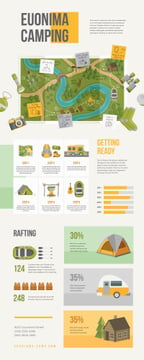Sold And Shipped An Essential Guide To Selling Camping Tents Online
Sold And Shipped An Essential Guide To Selling Camping Tents Online
Blog Article
The History of Bell Tents
The conical shape of a bell outdoor tents makes it among one of the most effective sanctuary layouts in background. Recognized by many names, including the Tipi, Chum, Goahti, Lavvu, or Nentsi, these single-pole cotton canvas tents were designed with practicality in mind.
Do wall tents have floors?
Their simpleness and convenience of setting up made them suitable for cultures on the move. This exact same performance caught the eye of leisure campers, who soon incorporated brief wall surfaces to develop a timeless camping tent style that we now know as the Bell Tent.
Origins
Bell tents are a tried and examined kind of instantaneous holiday accommodation. Their large insides and functional style-- they are durable, simple to set up and can endure strong winds due to their legendary bell form-- have actually made them a prominent choice for camping and glamping.
The modern bell outdoor tents traces its origins back to a 19th century armed forces tent made by Henry Sibley. He adjusted the style of the American Indian tipi to create his one-of-a-kind outdoor tents which was after that embraced by the army for usage in military camps and expeditions.
The concepts of this outdoor tents-- tough and difficult canvas providing a home-away-from-home for travellers-- have actually been fine-tuned over time to accommodate the demands of contemporary campers. For example, modern glamping outdoors tents supply features such as rugs and beds to enhance the convenience of campers. These attributes likewise help to keep the stability of the original design and secure against the elements.
Army Usage
In the 19th century, bell camping tents were first used as army area shelters. They were a preferred selection since they were durable, spacious, and very easy to establish. Today, these tents are preferred amongst campers and glampers for their stylish and functional style.
They are also commonly used in army and rescue operations, where quick release is essential. Their simple framework implies that they can be established in a short quantity of time, providing personnel even more time to focus on the goal available.
The bell tent is generally made from a durable and weatherproof canvas, with a centre pole that's sustained by a series of fixes. Period prints reveal that these tents were formed more like a cone than a squat framework, and the walls were tiny in connection with the height of the facility pole. This permitted them to endure wind and rain. They were commonly used by the ANZAC soldiers on their expeditions throughout Europe and Gallipoli.
Glamping
Glamping is a contemporary outdoor recreation that has actually ended up being increasingly prominent. Individuals from all walks of life are seeking a method to enjoy the outdoors in comfort and style. Whether it's an enchanting trip or a family outdoor camping journey, a good quality outdoor tents can make all the difference.
A bell outdoor tents's round shape aids with stability in gusty conditions, while its large inside can fit many individuals. It is likewise easy to set up, calling for only a main pole and a cone-shaped canvas roof that clears up right into a broad base.
The bell outdoor tents was invented by Henry Hopkins Sibley, an US Military soldier that served on the Texas frontier in the 1850s. He took ideas from tipis he saw, and established a gifts for hikers and campers layout that was durable and easily mobile. His tent was patented in 1856.
Contemporary Usage
Today, bell tents are a staple in shop outdoor camping sites, celebration accommodations, and as sophisticated outdoor shelters for wedding events or hideaways. Their trendy, ageless layouts blend custom with modernity, making them a favorite among those trying to find unique and comfortable accommodations that are both aesthetically attractive and remarkably easy to set up.
The contemporary bell outdoor tents traces its origins back to typical tents utilized by nomadic people in Northern Europe, but experienced its heyday around the 19th century when canvas changed animal hides as the key material. This change, combined with a functional layout that prioritizes headroom, saw the introduction of a preferred armed forces area sanctuary and, later on, the renowned camping tent we understand as the bell.
In the 1850s, an US Army soldier named Henry Hopkins Sibley produced the initial modern-day bell camping tent. Attracting inspiration from the tipis he had seen on the Texas frontier, his new camping tent used a solitary central pole and vents to create a framework that was both sturdy and conveniently portable.
How much are pop up tents?
